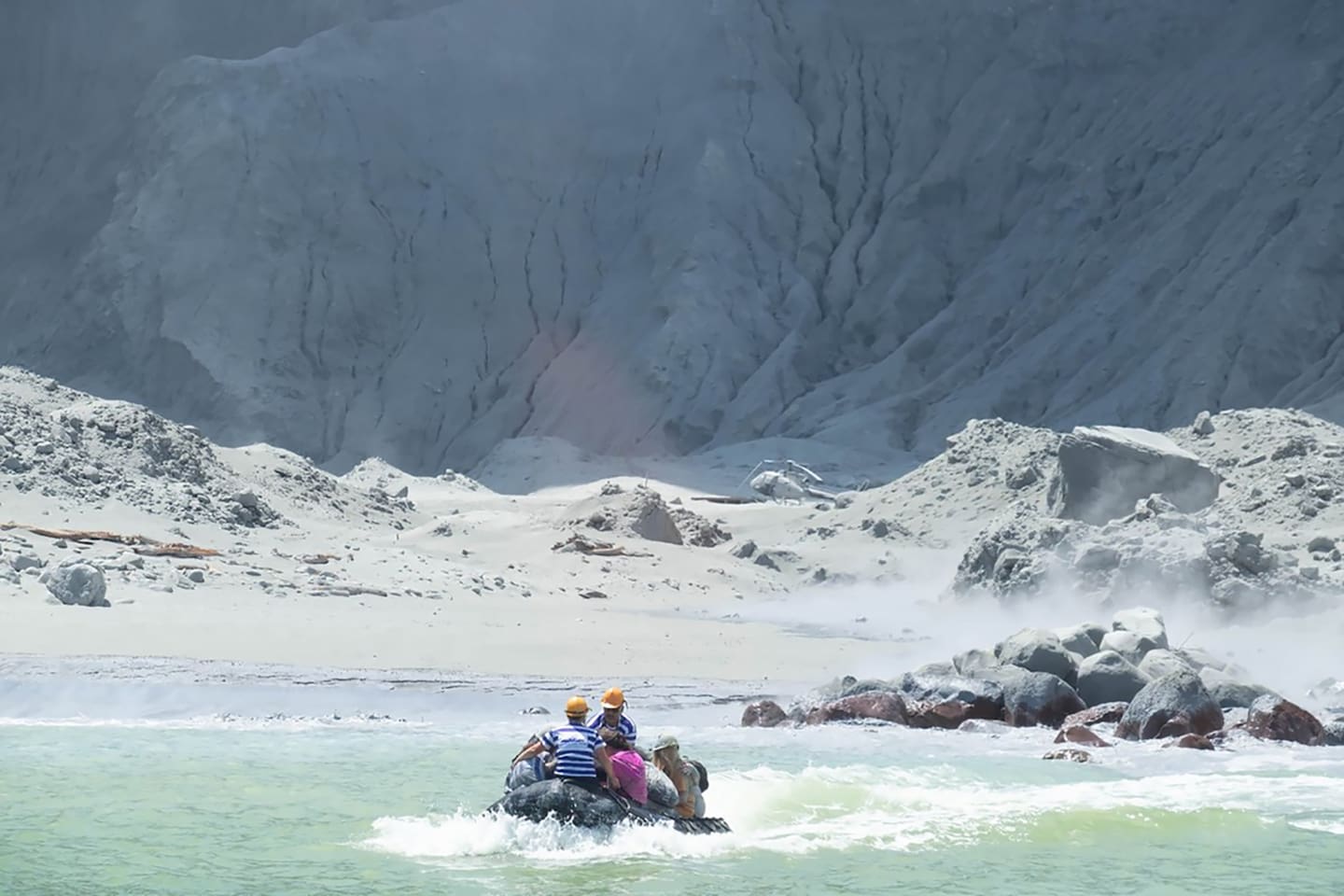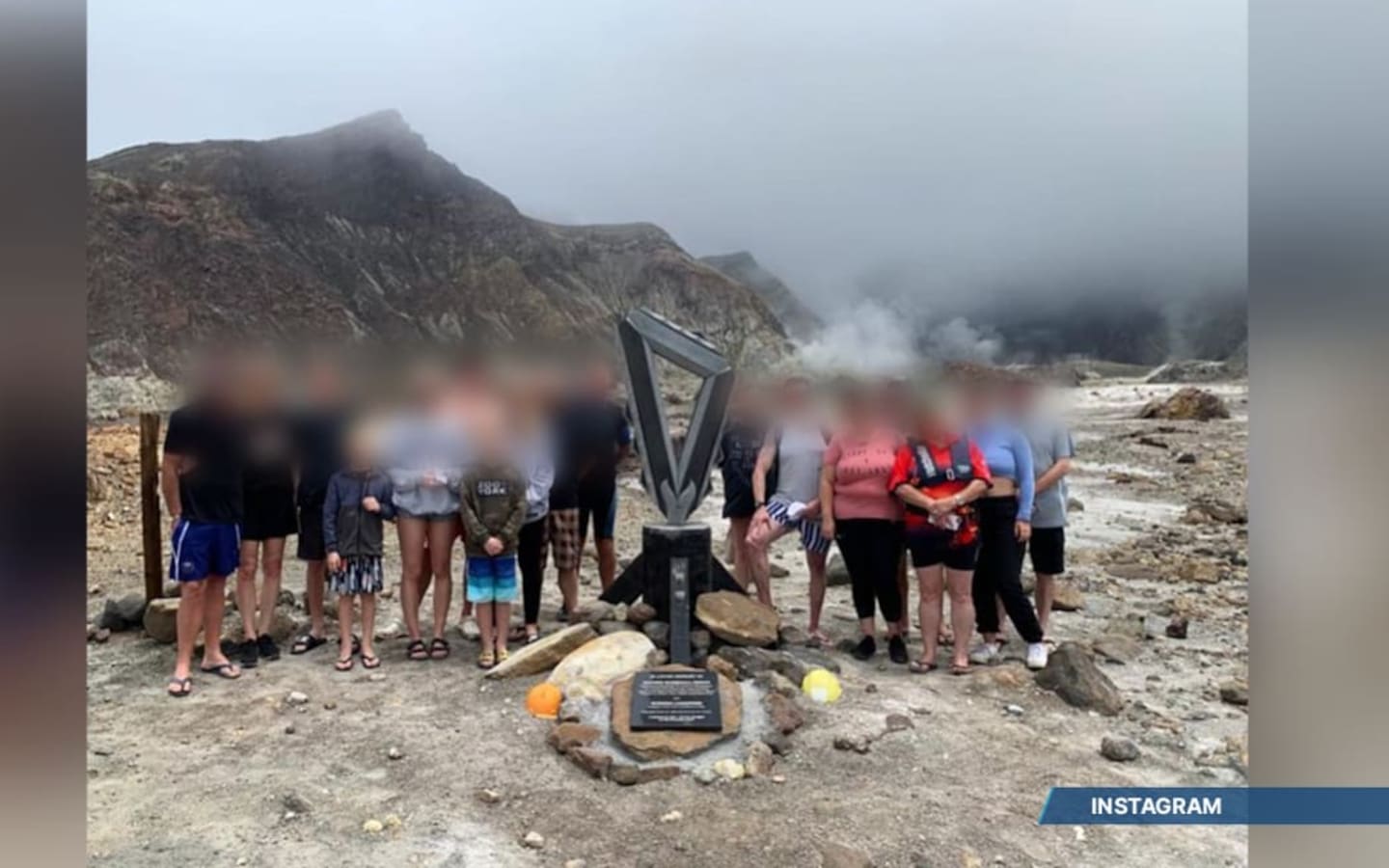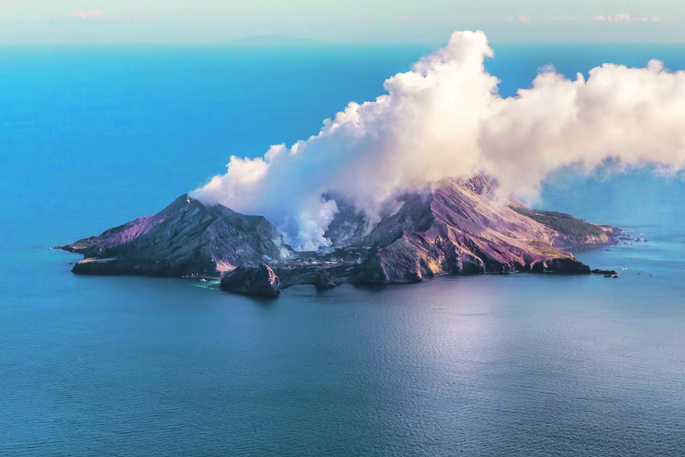WARNING: Graphic content
A crack medical team’s desperate battle to try and save a child severely injured in the Whakaari / White Island eruption – and the heartbreaking moment when it dawned on them the patient was going to die – are revealed in a new book penned by an intensive care doctor.
A Dim Prognosis – billed by publisher Allen & Unwin as a “crippling exposé of New Zealand’s failing health system” - arrives in bookstores around the country today.
Written by Ivor Popovich, it looks at his journey from medical student to the frontline of critical care; including what he believes are failures in the system and his suggestions about how to fix them.
The young doctor writes about the experience of caring for patients injured during the December 9, 2019, eruption of Whakaari / White Island that killed 22 people and badly injured 25 more.
At the time he was a registrar doctor – having completed his basic training – starting a rotation training in intensive care on the day of the White Island disaster.
As part of the programme, Popovich was rotated to work in the intensive care unit at Auckland’s Middlemore Hospital, home to the National Burn Centre of New Zealand.
Given the severity of the wounds inflicted by the eruption and the dressings they were covered in, Popovich wrote in A Dim Prognosis that it was hard to tell the genders or ages of patients.
That included one who was simply known as “Bed 7” who had suffered 90% burns and had deteriorated since being airlifted to Middlemore Hospital from Whakatāne.
“We had thrown everything we had at them,” Popovich wrote.
“Thirty litres of fluid, multiple powerful medications, a steroid medication, a paralytic drug and careful adjustments of the ventilator to try to get enough oxygen into the lungs, which were charred by the ash they had sucked in.”
 Rescue helicopter and ambulance at the Whakatāne waterfront as those badly injured in the Whakaari / White Island eruption are taken to shore. Photo / NZME
Rescue helicopter and ambulance at the Whakatāne waterfront as those badly injured in the Whakaari / White Island eruption are taken to shore. Photo / NZME
Despite the care given, the patient’s blood pressure had dropped to 50/20; a life-threatening low recording.
The on-call specialist “breathed out a large sigh and flung his pen at the wall. It ricocheted off the wall and into the rubbish bin,” Popovich wrote.
The specialist then said: “It’s time to stop. This is unsurvivable”.
At the time, the book’s author thought the victim was an adult.
Popovich worked throughout the night trying to save others critically injured on White Island before being relieved 12 hours after he started.
When he returned to Middlemore Hospital for his second intensive care unit shift at 8pm, he heard nurses talking about the death of a child the previous night.
 Tourists are ferried off Whakaari / White Island after the eruption. Photo / Michael Schade
Tourists are ferried off Whakaari / White Island after the eruption. Photo / Michael Schade
“I interrupted their conversation. ‘Um, I think you’re mistaken. Only one person died last night, and it was an adult’,” Popovich wrote.
When told police had identified the dead person as a child, Popovich wrote in A Dim Prognosis he “went into the toilet and wept”.
“An ICU full of ash-covered, mummified identical siblings”
A paper written by National Burn Centre of New Zealand clinical leader Richard Wong She late last year revealed some of the workload faced by teams treating White Island victims.
That included a combined 403 hours of surgeries between the first admission on December 9, 2019, to March 9, 2020. In the same period, a combined 111 hours of surgery were carried out on non-White Island patients.
It equated to a month’s work of surgery carried out on those on the island within the first day of the tragedy, and almost a year’s worth within the first three months of the eruption.
 Intensive care doctor Ivor Popovich has written an eye-opening account of life on the frontline of acute medical care, the problems he sees in the medical system and how he would fix them. Photo / Stephen Tilley
Intensive care doctor Ivor Popovich has written an eye-opening account of life on the frontline of acute medical care, the problems he sees in the medical system and how he would fix them. Photo / Stephen Tilley
Popovich wrote given the workload and conditions on the first night: “I felt as if we were alone”.
“At one point I stood frozen in the middle of the ICU, not knowing where to go to next,” he wrote in A Dim Prognosis.
“It felt as if we were trying to hold on to an expanding mist with our hands. I was sweat-soaked from heat to toe and feeling the nausea you get when you haven’t eaten for hours.”
Medical teams didn’t know the identity of most of the victims, with them being known only by their room numbers.
“It was an ICU full of ash-covered, mummified identical siblings.”
The nitrile gloves used by surgical teams “disintegrated on contact with ash”.
 Families of victims of the White Island volcanic eruption in 2019 returned to the island in 2022 to pay their respects. Photo / Instagram
Families of victims of the White Island volcanic eruption in 2019 returned to the island in 2022 to pay their respects. Photo / Instagram
One patient Popovich helped was “embedded - front, back, arms and legs – in volcanic ash, black as coal”.
“I couldn’t tell the depth of the burn wounds underneath. Spots of cherry-red burn peeked out from under the ash here and there.”
How tragedy rocked a day that started “quite pleasantly”
December 9, 2019, was always going to be a day of learning for Popovich.
But as he settled into a day that started “quite pleasantly” at his house, there was no way he could ever have fathomed just how much he would experience – and learn – in the coming hours.
Popovich writes in A Dim Prognosis how he was “excited” about the first day of the rotation.
 Intensive care doctor Ivor Popovich's new book A Dim Prognosis is available in bookstores today. Photo / Supplied
Intensive care doctor Ivor Popovich's new book A Dim Prognosis is available in bookstores today. Photo / Supplied
“I looked forward to three days of getting paid to hang around, listen to some introductory talks, saunter around the hospital and meet new colleagues,” he wrote.
“There was certain to be some free food involved as well. I had prepared a list of ‘interesting’ facts about me in case of an ice-breaker exercise.”
Soon after arriving at Middlemore Hospital, at a meeting about 8.30am, he was told he would actually be required for night shift relief cover, to go home and come back at 8pm.
 White Island was left covered in a toxic ash after the eruption; the same compound that covered tourists and tour guides. Photo / NZME
White Island was left covered in a toxic ash after the eruption; the same compound that covered tourists and tour guides. Photo / NZME
Back at home, enjoying some downtime before reporting back to duty, he tuned into live TV coverage that revealed the horror of what happened on the volcanic island off the Bay of Plenty coastline during a visit by several tour parties.
“I remember loudly saying ‘Holy s***!’ and wishing I had managed to get in more sleep. It might be a long night,” he wrote in A Dim Prognosis.
As the news sunk in, tour ships and helicopters rushed badly injured and dying tourists and tour guides to Whakatāne.
“This many critical patients all at once would have been a huge deal for even the biggest hospitals in the country, let alone a small rural hospital” Popovich wrote.
 What was left on a tour helicopter parked on White Island in the aftermath of the eruption. Photo / Instagram
What was left on a tour helicopter parked on White Island in the aftermath of the eruption. Photo / Instagram
“They must have been overwhelmed.”
Popovich drove to Middlemore Hospital before his first shift “in silence”.
He walked into an intensive care unit where “the atmosphere hung thick like the clouds over the ocean in the images that were being shown on every screen”.
He then met the on-call specialist who asked him if he had any previous ICU experience.
When Popovich replied “some”, the on-call specialist responded: “Good, good. Well, buckle up, my friend”.



0 comments
Leave a Comment
You must be logged in to make a comment.